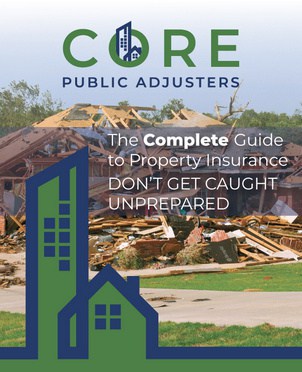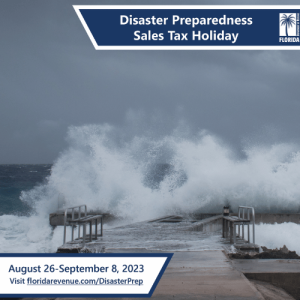Note: This article is a continuation of the mold series, but don’t worry, we’ll catch you up with what you need to know. Contact us if you have mold and want immediate assistance identifying if cleanup and repair costs could, and should, be paid for by your insurance company.
In a previous article, entitled: “How Do You Check for Mold After a Storm or Flood?” we explained that mold is a very tricky problem because it can spread undetected for years. Apart from high moisture areas, such as kitchens and bathrooms, mold can breed dangerously in leaking ceilings, drainage systems, and walls.
What You Need to Know About Mold
Mold is dangerous.
According to the Center for Disease Control (CDC), the most common indoor molds are Cladosporium, Penicillium, and Aspergillus. Many common building materials provide the required nutrients that encourage mold to grow, including paper and paper products, cardboard, ceiling tiles, wood, and wood products. Based upon your sensitivity to mold, allergies, and asthma, mold can cause a variety of health effects. [1]
Medical News Today explained, “Molds produce spores, which spread by floating around in the air. Mold spores are present in all indoor environments…Mold spores thrive in environments that are moist and warm, so when they land on a damp spot, they begin to grow.”
Mold can produce similar symptoms to other allergies and can also affect the upper respiratory tract, especially for those with asthma. Symptoms include:
- a blocked or runny nose
- an itchy nose
- an itchy throat
- sneezing
- watery eyes [2]
Control the growth of mold by removing moldy items from living areas.
Once mold starts to grow in carpet, insulation, ceiling tiles, drywall, or wallboard, the only way to deal with the problem is by removal and replacement.
It is important to properly clean and dry the area as you can still have an allergic reaction to parts of the dead mold and mold contamination may recur if there is still a source of moisture.
Remove or replace carpets and upholstery that have been soaked if they cannot be dried quickly.
Clean up and dry out your home thoroughly and quickly (within 24-48 hours) after any flooding. Use a wet vacuum to remove remaining dirt. It’s advised to scrub cleanable surfaces (such as wood, tile, stone) with soapy water and a bristle brush. It has been effective to clean hard surfaces (such as flooring, molding, wood and metal furniture, countertops, and sinks) with water and dish detergent. Make sure to dry surfaces quickly and thoroughly after cleaning. It’s best to use a fan, air conditioner, or dehumidifier that wasn’t affected by flooding.
Should bleach or other biocides (disinfectants, sanitizers, or fungicides) be used to kill mold?
If you attempt to clean the mold, remember to take photos or other evidence if you suspect any damage to the infrastructure of your home before you begin. The amount of cleaning depends on the severity of the mold. Florida Health offered the following advice:
Using bleach or other chemicals to kill indoor mold growth is not needed in most cases. The goal should be to remove mold growth by cleaning or removing moldy materials. Dead mold can still pose health risks if you are exposed. Using bleach or other disinfectants on surfaces after mold removal may be needed where people are thought to be susceptible to fungal infections (such as a person with immune system problems). [3]
The Environmental Protection Agency has also offered some advice on the cleanup of mold, including the recommendation for hiring a professional for testing and sampling:
Surface sampling may be useful to determine if an area has been adequately cleaned or remediated. Sampling for mold should be conducted by professionals who have specific experience in designing mold sampling protocols, sampling methods and interpreting results. [4]
Hiring a professional to help you with the cleanup, documentation, and estimation of damages is sound advice. Most insurance companies require evidence that the mold damage occurred due to circumstances outside of your control, such as a severe storm. But don’t worry, Core Public Adjusters is ready to help you with your claim. First, make sure you’re prepared to answer these questions:
- When did you first notice the mold site?
- Where is the mold site and how large is it?
- What type of damage are you reporting, e.g., electrical damage, rotten wood, drywall damage, etc.?
- Who is your home insurance provider?
- Have you contacted your insurance provider to fill out a report or a contractor to start cleanup?
Contact Us
Once you are ready to move forward with a damage claim, contact CORE Public Adjusters to begin the process. We’ll make sure all required steps are undertaken with accuracy and professionalism, with the goal of making sure your life can return to normal as fast as possible. If you’re wondering how much more money you can recover by enlisting one of our adjusters rather than contacting your insurance provider on your own, check out the article we published in June: How Much More Could a Public Adjuster Get You for Your Damaged Property?
Article References
- Center for Disease Control: https://www.cdc.gov/mold/faqs.htm
- Medical News Today: https://www.medicalnewstoday.com/articles/288651#mold-and-health
- Florida Health: https://www.floridahealth.gov/environmental-health/mold/index.html#more%20information%20on%20mold
- Environmental Protection Agency: https://www.epa.gov/mold







